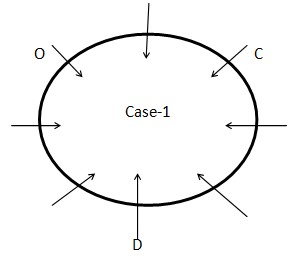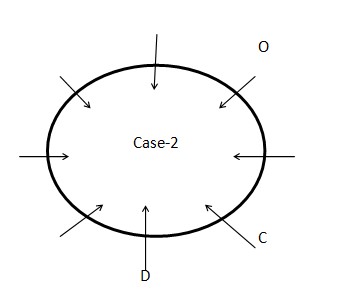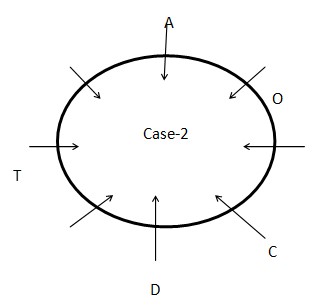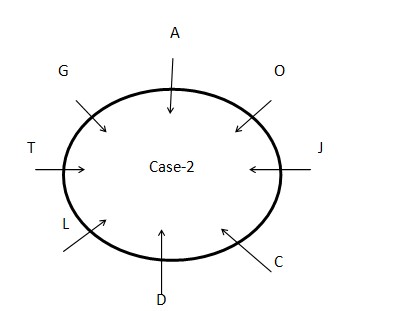Question
Four of the following five are alike in a certain way
and hence form the group. Which of the following ones does not belong to the group? Study the following information carefully and answer the below questions. Eight people D, T, O, L, J, A, C, and G are seated around the circular table. All the persons are facing towards the table but not necessarily in the same order. D sits three places away from O who sits second to the right of C. A sits second to the left of T. Neither O nor D is an immediate neighbour of T. The number of persons who sit between L and O is one less than the number of persons who sit between G and J when counted from the right of G and L. L doesn’t sit next to O.Solution
D sits three places away from O who sits second to the right of C 
 A sits second to the left of T. Neither O nor D is an immediate neighbour of T. so case-1 is eliminated
A sits second to the left of T. Neither O nor D is an immediate neighbour of T. so case-1 is eliminated  The number of persons who sit between L and O is one less than the number of persons who sit between G and J when counted from the right of G and L. L doesn’t sit next to O.
The number of persons who sit between L and O is one less than the number of persons who sit between G and J when counted from the right of G and L. L doesn’t sit next to O. 
The sum of the ages of C and D after 10 years will be 100 years. If the ratio of their present ages is 9:7, find the difference between their ages.
The ratio of the ages of Pari and Qureshi is 5:9. If the ratio of the age of Pari after 3 years and the age of Qureshi after 9 years is 1:2, then find t...
- Five years from now, the sum of the ages of ‘X’ and ‘Y’ will be 50 years. Ten years ago, ‘X’ was 8 years younger than ‘Y’. What will be the...
The vice-captain of a cricket team of 11 members is 24 years old and the opener is 5 years older. If the ages of these two are excluded, the aver...
The ratio of Amit’s and Bhanu’s ages will be 33:26 after 12 years. The current average age of Amit, Bhanu, and Charu is 53 years. Charu’s present ...
- The average age of (x + 7) interns is 19 years. After adding a 41-year-old mentor, the average rises to 20 years. Find x% of 500.
"Three friends, Aman, Bhuvan, and Chinu, have the following age relationship: Aman's age six years ago was half of Bhuvan's age t...
- The average of the present ages of R, S and T is 28 years. Triple the present age of S is 45 more than twice the present age of R. If T’s age after 6 yea...
Amit age after 20 years will be 4 times his age 4 years back. What is the present age of Amit?
Sum of the present ages of A, B, C and D is 70 years. After 5 years ratio of their ages is 6:4:3:2. What is C’s present age?
Relevant for Exams:


